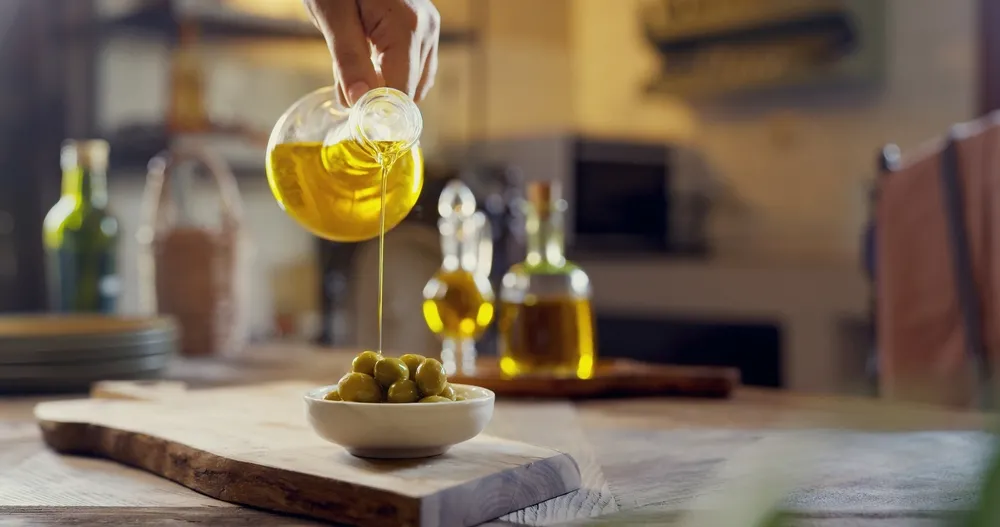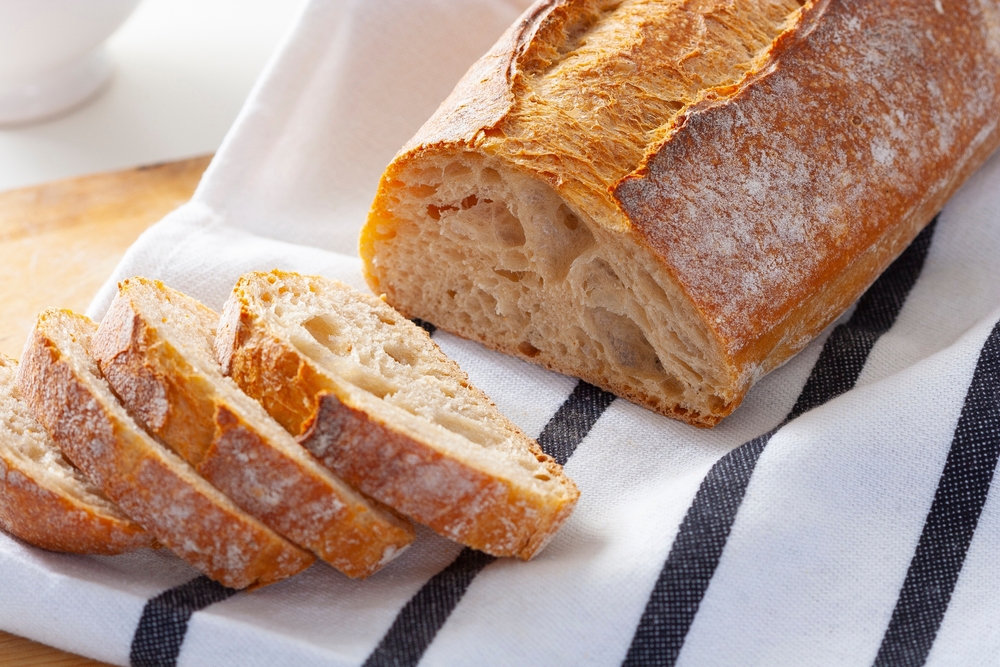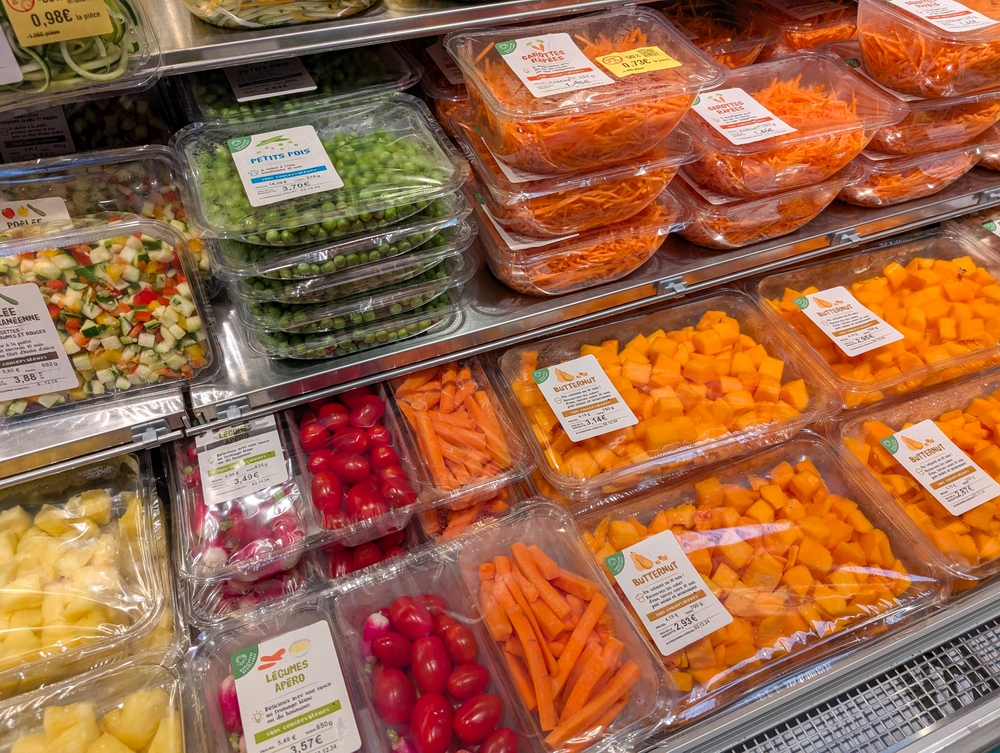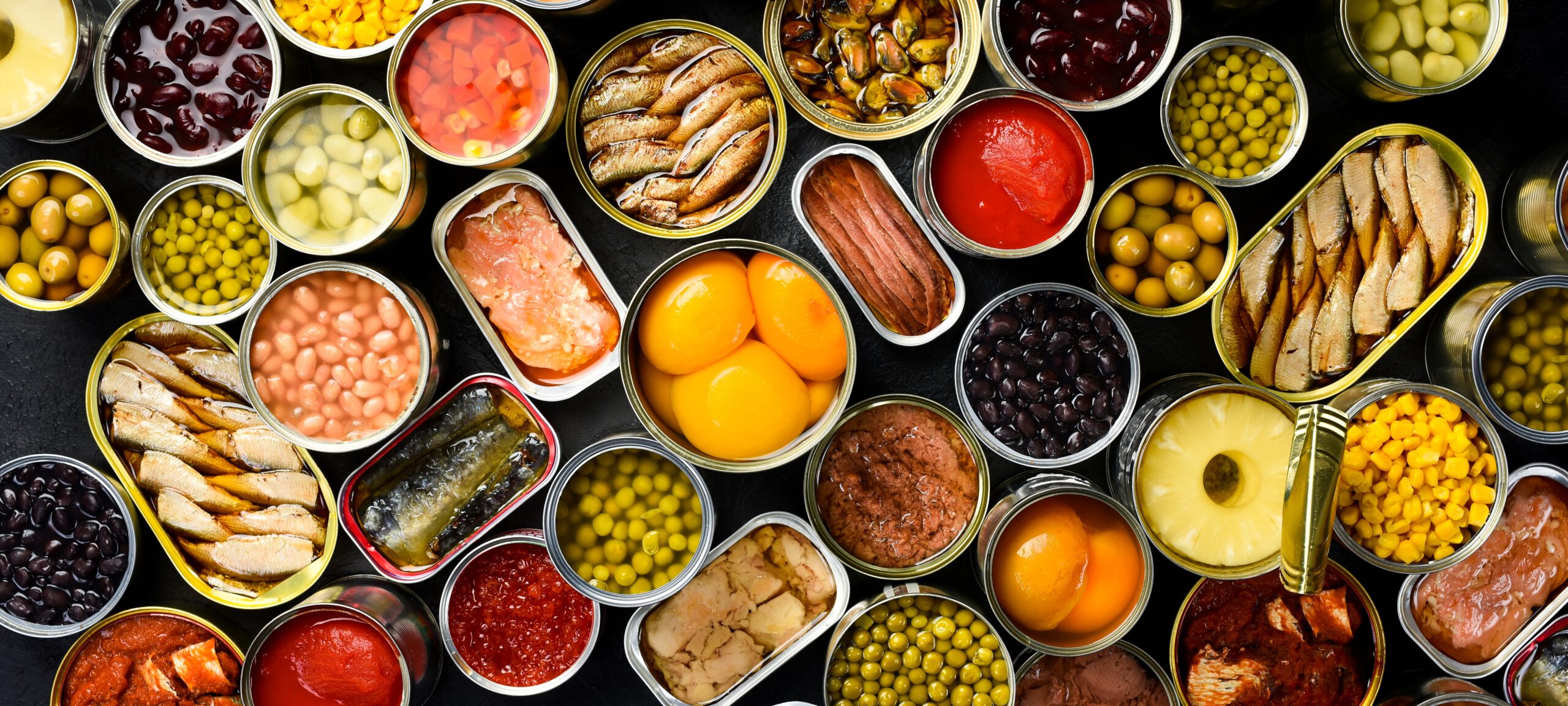Navigating the aisles of a well-stocked deli will bring you up front and personal with a tantalizing array of meats, cheeses, and assorted goodies. However, the allure often masks the reality that most deli purchases will leave your wallet lighter for no good reason. Here are 13 common deli purchases that are typically a rip-off.
1. Gourmet Salads

Gourmet salads from the deli counter look vibrant and healthy, but their price tags are often inflated. These salads usually contain inexpensive ingredients, dressed up with exotic names and a sprinkling of fancy toppings. The markup can be attributed to the labor involved in chopping and assembling, which doesn’t necessarily translate to nutritional or taste superiority. As emphasized in a report by the Academy of Nutrition and Dietetics, making salads at home is often more cost-effective and healthier.
Crafting your own salads allows you to control portion sizes and the freshness of ingredients. You can go beyond the predictable iceberg lettuce by incorporating seasonal produce and unique grains. Homemade dressings can be adjusted to suit your taste, reducing added sugars and unhealthy fats typically found in store-bought versions. This hands-on approach to salad making not only improves your health but also builds your culinary confidence.
2. Marinated Olives

Marinated olives sit enticingly in their briny baths, promising a burst of flavor that seems both exotic and indulgent. But before you scoop them into your cart, consider the hefty markup that often accompanies these deli delights. The reality is that plain olives, which you can marinate yourself with herbs and spices, offer a more cost-effective and personalized alternative. You’re paying for the perceived sophistication of a pre-marinated product, which often doesn’t justify the price.
By marinating olives at home, you gain control over the flavor profile and intensity. A simple mix of olive oil, lemon zest, garlic, and your choice of herbs can transform a basic olive into a gourmet snack. Plus, home-marinated olives can be tailored to complement any dish, offering versatility that store-bought versions simply can’t match. This small effort in personalization can not only save money but also enrich your dining experience.
3. Pre-Packaged Deli Meats

Pre-packaged deli meats are a staple in many refrigerators, but they often come with a premium price tag and questionable quality. These sealed packs usually contain preservatives and fillers that compromise the meat’s natural flavor and texture. Freshly sliced deli meats, though sometimes more expensive pound-for-pound, offer a superior taste and are often free from additives. An investigation by the American Heart Association revealed that freshly sliced meats are generally lower in sodium than their pre-packaged counterparts.
The key is to buy only what you need to ensure maximum freshness. Ordering at the deli counter lets you customize thickness, interact with the deli staff about sourcing, and even sample before buying. It’s a more engaging shopping experience that doesn’t just satisfy your immediate craving but also supports more informed purchasing decisions. With a bit of planning, you can enjoy higher-quality meats without paying the pre-packaged premium.
4. Pre-Made Sandwiches

Pre-made sandwiches are the quintessential grab-and-go option, but convenience comes at a price. Often marked up significantly, these sandwiches can cost nearly double what you’d pay if you bought the ingredients separately. Moreover, the ingredients may not be as fresh, having been assembled hours (or even days) prior to your purchase. The result is often a lackluster dining experience that doesn’t justify the convenience tax.
Making your own sandwiches empowers you to select only the freshest ingredients. You can experiment with flavors and textures, customizing to your palate and dietary needs. Not only is this approach kinder to your budget, but it also enhances the nutritional value of your meal. Taking a few extra minutes in the morning to assemble your lunch can pay dividends in both taste and savings.
5. Pre-Sliced Cheese

It may seem convenient to grab a package of pre-sliced cheese, but it’s often more expensive than buying a block and slicing it yourself. You’re essentially paying for the convenience of uniform slices, which is hardly worth the premium when you think about it. Moreover, pre-sliced cheese often comes with added preservatives to maintain freshness, impacting the taste and quality. According to a Consumer Reports study, buying blocks of cheese can save you up to 30% compared to pre-sliced options.
Besides cost, there’s the matter of variety and quality. Blocks of cheese often come in a wider range of flavors and allow for a fresher and more authentic taste experience. Slicing cheese yourself also means you can adjust the thickness to your liking, enhancing the versatility in its usage. Ultimately, the minor effort of slicing your own cheese can significantly elevate your culinary creations while saving money.
6. Pre-Cut Fruit Cups

Pre-cut fruit cups offer a seemingly healthy snack or meal addition, but the convenience comes with a financial sting. Sliced fruit generally costs significantly more than buying whole, due to packaging and labor costs. Additionally, the shelf life of pre-cut fruit is shorter, meaning you’re also running the risk of spoilage before consumption. It’s a convenience many find hard to resist, but it’s often unjustifiable from a budget perspective.
By purchasing whole fruits, you benefit from both fresher taste and better preservation of nutrients. You can also minimize waste, using peels and leftover bits for composting or other culinary uses. Slicing fruit yourself allows you to prepare just the amount you need, ensuring nothing goes to waste. The savings, both immediate and long-term, make this an easy swap to improve both your budget and your eating habits.
7. Specialty Breads

Artisan and specialty breads can be the crown jewel of any deli, but these loaves often carry a hefty price tag that isn’t always justified by their ingredients. The marketing allure of “handcrafted” or “small batch” often distracts from the fact that many of these loaves are made with basic ingredients you can find at home. A study by the Real Bread Campaign highlights that many specialty breads contain unnecessary additives and preservatives. This means that you might be paying a premium for a product that isn’t as authentic as its price suggests.
Baking your own bread at home can be an eye-opening experience, proving both economical and gratifying. You control the ingredients, ensuring freshness and quality, and can experiment with flavors and textures. The process of baking can also be meditative and rewarding, offering a peaceful break from the hustle and bustle. Plus, the aroma of freshly baked bread wafting through your home is priceless in its own right.
8. Quinoa Salad Bowls

Quinoa salad bowls sound nutritious and trendy, but they’re often marked up significantly at delis. The base ingredient, quinoa, is inexpensive when purchased in bulk, and the other components, like vegetables or dressings, are usually commonplace items. The perceived health halo of quinoa and the labor involved in preparation contribute to the inflated prices. However, making a batch of quinoa at home is both easy and cost-effective.
By preparing quinoa salads yourself, you can customize the ingredients to suit your taste and dietary needs. This allows for greater creativity, from adding seasonal vegetables to experimenting with dressings. The flexibility to make larger batches also means you can prepare meals for the entire week, saving both time and money. The satisfaction of creating a dish that aligns with your nutritional goals is often worth the initial investment in time.
9. Pre-Made Guacamole

Pre-made guacamole often tempts with its vibrant green hue and promise of creamy deliciousness. However, the reality is that these tubs are often overpriced and can contain preservatives that alter the taste and texture. The cost of buying avocados and a few additional ingredients like lime, onion, and cilantro is usually much less than the packaged alternative. Plus, homemade guacamole offers a freshness that store-bought versions simply can’t match.
Crafting guacamole at home allows you to adjust seasonings to your liking and control the texture. You can also experiment with add-ins such as tomatoes or jalapeños for a personalized twist. Preparing it yourself assures that you’re consuming a product at its peak freshness, with no unwanted additives. It’s a small culinary endeavor that yields big savings and even bigger flavor.
10. Pre-Sliced Veggies

Pre-sliced veggies might save you some prep time, but they often come with a higher price tag. You’re essentially paying for someone else to do a simple task that requires minimal effort. Additionally, these pre-sliced options sometimes lack the freshness of whole vegetables, affecting both taste and nutritional value. The convenience is tempting, but it often doesn’t justify the extra cost.
Purchasing whole vegetables gives you the flexibility to cut them as needed, ensuring they stay fresh longer. You can also utilize the entire vegetable, reducing waste and maximizing value. The seemingly mundane task of slicing can become a mindful activity, enhancing your connection to the food you consume. In the long run, this simple shift in purchasing can lead to healthier meals and more money left in your pocket.
11. Fancy Nut Butter

Fancy nut butters with added flavors or ingredients can seem like a worthwhile splurge, but the cost is often significantly higher than making your own. These products are marketed as gourmet experiences, yet they often contain added sugars and oils that dilute the natural goodness of the nuts. Making nut butter at home is relatively easy and allows you to use fresh nuts and control the additional ingredients. The result is a purer, more authentic taste that doesn’t come with the inflated price tag.
By preparing nut butter yourself, you can experiment with different nut combinations and flavorings. The process allows for creativity, letting you tailor the texture and flavor to your preferences. Homemade nut butter is also typically fresher, as you can make it in small batches as needed. This switch not only enhances your culinary repertoire but also promotes a more mindful approach to consumption.
12. Bagged Salads

Bagged salads present an easily accessible meal option but often come with hidden costs. Though convenient, these salads are typically more expensive than buying whole heads of lettuce or greens. The price you pay includes the cost of washing, chopping, and packaging, which is often not worth the trade-off. Moreover, pre-packaged salads can sometimes contain wilted or less-than-fresh ingredients.
Choosing to make your own salads from scratch can be both a financial and culinary upgrade. You gain the advantage of selecting the freshest produce and customizing the mix to suit your taste. This approach often results in a more satisfying meal experience and can help reduce food waste. With just a bit more effort, you can enjoy salads that are fresher, tastier, and more budget-friendly.
13. Artisan Pickles

Artisan pickles might promise a tangy crunch, but they often come at a premium cost. These pickles are frequently marketed as gourmet items, which can significantly drive up the price. However, the ingredients involved—cucumbers, vinegar, spices—are relatively inexpensive. The allure of specialty pickles often rests on clever branding rather than an actual jump in quality or flavor.
Making pickles at home is surprisingly simple and allows you to control the ingredients and seasoning. You can experiment with different spice blends or even try pickling other vegetables for variety. The process can be both fun and satisfying, yielding a product that’s fresher and free from unnecessary additives. By taking pickle production into your own hands, you gain both culinary knowledge and substantial savings.
This article is for informational purposes only and should not be construed as financial advice. Consult a financial professional before making investment or other financial decisions. The author and publisher make no warranties of any kind.








